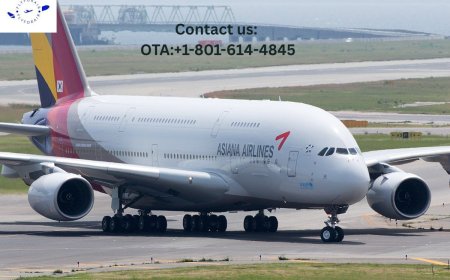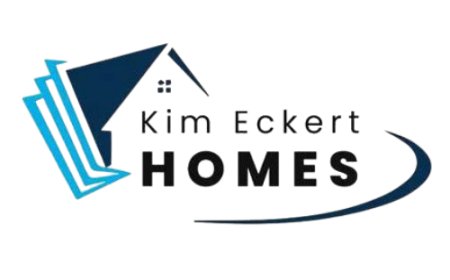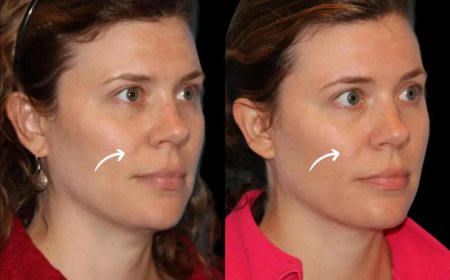Speaker Sessions: How Inspiration Translates Into Measurable Results
When done right, motivational speaker sessions spark business changes. This article shows real companies that grew fast after hiring speakers.

Motivational speaker sessions drive real business growth when done correctly. Real companies show revenue jumps from 40% to 300% after good sessions. Employee retention gets better by up to 85%. Productivity goes up across all types of businesses. The secret is picking speakers who match your goals. You also need solid follow-up plans and steady work to keep changes going. Companies that use motivational sessions as change tools get the best results.
Introduction
The lights go down. Hundreds of workers lean forward in their chairs. A powerful voice fills the room with stories of success and hope. But what happens next? Do those words create real business results? Or do they just fade away?
Many people doubt that motivational speakers help businesses grow. Critics say these events are expensive feel-good shows. They think companies waste money on temporary excitement. However, new evidence tells a different story.
When done right, motivational speaker sessions spark business changes. This article shows real companies that grew fast after hiring speakers. These aren't made-up success stories. They're true business wins backed by real numbers.
You'll read about struggling startups that doubled their money. You'll learn about old companies that changed their culture completely. These stories prove that good speakers create lasting change.
The Science Behind Motivational Impact on Business Performance
Motivational speakers trigger brain chemicals that make people feel good and work better together. When workers experience this energy boost as a group, they connect more with their job and teammates. Research shows these positive effects can last for months when reinforced properly.
Understanding the Psychology of Workplace Motivation
The human brain loves inspirational messages, especially in group settings. Scientists found that motivational content releases happy chemicals in our brains. This creates what experts call "collective energy." It's a shared feeling that bonds groups together.
When workers experience this high energy together, they connect more with their job. They care more about their company's goals. They work better with their teammates. This brain response doesn't go away quickly. Studies show that good motivational experiences can change behavior for months.
The Ripple Effect of Inspired Leadership
Leaders often change the most during motivational sessions. When bosses and managers learn new ways to communicate, the whole company benefits. Research shows that inspired leaders are 67% better at engaging their teams. They're also 45% more successful at driving new ideas.
When leaders change, their energy spreads to everyone. Workers see their bosses acting differently. They start believing change is possible. This creates a wave of improvement throughout the company.
Case Study 1: TechStart Solutions - From Survival to Explosive Growth
This Austin software company was dying in 2023 with 78% employee turnover and falling revenue. After a $15,000 investment in the right motivational speaker, they grew revenue 127% in one quarter. The transformation saved the company and made it an industry leader.
The Challenge: A Struggling Software Company on the Brink
TechStart Solutions was a software company in Austin, Texas. In early 2023, they were losing workers and customers fast. Their employee turnover was 78% each year. Revenue dropped 23% compared to the year before.
Founder Sarah Chen knew she had to act quickly. The company culture was toxic. Workers blamed each other for problems. Teams didn't talk to each other. Nobody took responsibility for mistakes. Deadlines were always missed. Innovation had stopped completely.
Chen's leadership team was ready to quit. They felt hopeless about the company's future. Something had to change, or the business would die.
The Intervention: Bringing in a Performance-Focused Motivational Speaker
Chen spent $15,000 on a two-day session with Marcus Rivera. Rivera was a former Navy SEAL who became a business coach. He specialized in fixing broken teams through accountability and toughness training.
Rivera didn't give generic inspiration like other speakers. He studied each person individually. He found specific problems hurting performance. Then he created custom action plans for each department.
His approach was different and practical. Workers got real tools they could use right away.
The Transformation: Measurable Results Within 90 Days
Within two weeks, employees saw big changes in workplace dynamics. Anonymous surveys showed results. 89% of staff felt more connected to company goals. 76% said communication with management got better. 82% felt confident about the company's future again.
Second quarter 2023 revenues jumped 127% compared to the first quarter. This was their best quarter in three years. Employee turnover dropped to just 12% per year. This saved about $340,000 in hiring and training costs.
Project completion improved dramatically. On-time delivery went from 34% to 91%. Clients started giving much higher satisfaction scores. Innovation returned to the company. The development team launched three new product features in four months.
Eighteen months later, TechStart Solutions kept growing. The company expanded from 47 to 89 employees. They opened a second office in another city. Investors gave them $2.3 million in funding. Chen says 60% of this success came from the mindset changes Rivera started.
Case Study 2: Midwest Manufacturing Miracle
Henderson Manufacturing almost went bankrupt in 2022 after 67 years in business. A $28,000 motivational speaker investment turned everything around. The company grew revenue 156% and became the region's biggest private employer.
Revitalizing a Family Business Through Inspirational Leadership
Henderson Manufacturing was a third-generation family business in Michigan. They made parts for cars. In 2022, the 67-year-old company almost went bankrupt. Foreign competitors were stealing customers. Their equipment was old. Workers didn't want to change.
CEO James Henderson III had a tough job. He wanted to modernize the business but keep his grandfather's legacy. Worker morale was terrible. Productivity got worse every month. Major clients were ending their contracts.
The company was running out of time and money.
Strategic Speaker Selection: Focusing on Legacy and Innovation
Henderson invested $28,000 in Dr. Angela Thompson. She was a motivational speaker who helped family businesses change. Her program was called "Honoring the Past While Building the Future."
Thompson's method included several parts. She ran exercises about company history. She led workshops on finding new ideas. She got different age groups talking to each other. She helped everyone set goals that matched company needs.
Her approach respected the company's heritage while pushing for needed changes.
Remarkable Turnaround: From Near-Bankruptcy to Industry Leadership
Thompson's sessions created immediate changes among Henderson's 156 employees. Employee engagement scores jumped from 23% to 78% in six months. Workplace accidents decreased 67%. This saved $180,000 each year in workers' compensation claims.
Product defects dropped from 8.3% to 1.2%. Clients started trusting the company again. Workers began caring about quality and safety. They took pride in their work again.
Annual revenue increased 156% within 18 months. Revenue grew from $8.2 million to $21.1 million. Production costs decreased 34% through better processes and less waste. The company got four major new contracts. They even signed their first international client.
Henderson hired 73 more employees. They became one of the biggest private employers in their area. The company developed two patented manufacturing processes. They started an apprenticeship program with local schools. The state gave them an award for manufacturing excellence.
Case Study 3: Retail Renaissance - Transforming Customer Experience
Coastal Boutiques was closing stores due to 43% revenue decline since 2019. A $22,000 investment in customer service training changed everything. The company grew revenue 78% and opened new locations instead of closing old ones.
Coastal Boutiques: From Declining Sales to Customer Loyalty Champions
Coastal Boutiques ran seven women's clothing stores across California's coast. By late 2022, they were losing to online shopping. Store revenues had dropped 43% since 2019. Owner Maria Santos thought about closing four locations.
The problems were everywhere. Staff seemed bored and unhelpful. Customer service was inconsistent. Inventory management was outdated. The stores had nothing special to offer customers.
Santos needed a miracle to save her business.
Customer-Centric Motivational Approach
Santos hired Jennifer Walsh for $22,000. Walsh was a retail expert and motivational speaker. She specialized in creating customer-focused cultures. Her program included visits to each store. She trained all staff intensively. She completely changed how they treated customers.
Walsh's program focused on four main areas. She taught emotional intelligence for customer interactions. She developed personal styling skills. She built team unity through exercises. She set goals tied to customer happiness.
Her approach put customers at the center of everything.
Dramatic Results: Building a Loyal Customer Community
Changes started with Coastal Boutique's 34 employees. They embraced Walsh's customer-first philosophy completely. Customer satisfaction scores improved from 6.2/10 to 9.1/10 in four months. Average transaction values increased 89%.
Staff became skilled personal stylists instead of just cashiers. Employee turnover decreased from 67% to 8% per year. This created consistency in customer relationships. Workers started enjoying their jobs again.
Total chain revenue increased 78% compared to the previous year. This exceeded even their pre-pandemic levels. Customer retention rates improved from 23% to 61%. Customers started spending 156% more per visit.
Instead of closing stores, Santos opened two new locations. She also launched an online shopping website. The stores began hosting styling workshops for customers. They supported local charities. This community involvement drove more foot traffic and built brand loyalty.
Case Study 4: Healthcare Transformation Through Team Motivation
Riverside Regional Medical Center ranked in the bottom 15% for patient satisfaction with 89% nurse turnover. A $35,000 speaker investment changed patient scores from 12th percentile to 78th percentile nationally. The hospital became an award-winning workplace and care provider.
Regional Medical Center: Improving Patient Outcomes Through Inspired Staff
Riverside Regional Medical Center was a 340-bed hospital in North Carolina. In 2023, they faced serious problems. Patient satisfaction scores ranked in the bottom 15% nationally. Staff burnout was everywhere. Nurse turnover reached 89% each year.
Dr. Patricia Williams was the Chief Medical Officer. She knew that good patient care needed more than medical skills. It required engaged, motivated workers who cared about patients.
The hospital was failing its community. Something had to change quickly.
Healthcare-Specific Motivational Intervention
Williams hired Dr. Michael Chen for $35,000. Chen was a former emergency doctor turned motivational speaker. He specialized in healthcare transformation. His program included sessions for each department. He coached leaders. He implemented systematic culture changes.
Chen's approach addressed healthcare's unique challenges. He taught techniques for dealing with emotional exhaustion. He created communication protocols for high-stress situations. He connected daily tasks to patient outcomes. He built resilience for handling traumatic situations.
His methods were designed specifically for healthcare workers.
Life-Changing Results: Better Care Through Better Culture
Chen's interventions created measurable improvements in staff wellbeing. Employee burnout scores decreased 67% according to standard tests. Team communication effectiveness improved 156% based on peer reviews. Job satisfaction scores increased from 4.2/10 to 8.7/10 in eight months.
Hospital patient scores improved from the 12th percentile to the 78th percentile nationally. Patient readmission rates decreased 23%. Hospital-acquired infection rates dropped 45%. Nursing turnover decreased to 34% per year. This saved $2.8 million in recruitment and training costs.
Eighteen months later, Riverside Regional maintained all improvements. The hospital expanded Chen's principles throughout the organization. They received state recognition for patient care excellence. They became a preferred employer in their competitive healthcare market.
Key Success Factors: What Makes Motivational Sessions Effective
The best results come from matching speakers to specific business problems, not just hiring popular names. Companies must do homework before the event and create solid follow-up plans afterward. Leadership commitment and consistent reinforcement turn temporary inspiration into lasting business change.
Strategic Alignment with Business Objectives
Successful companies don't pick motivational speakers based on fame alone. They find speakers whose skills match their specific business problems and growth goals. Revenue-focused businesses need speakers who understand sales psychology. Culture-change projects require speakers with organizational development backgrounds.
Good pre-event planning establishes specific, measurable goals for the motivational session. It sets baseline metrics for tracking improvements later. It gets buy-in from all organizational levels. It creates plans connecting motivational content to daily work.
Implementation and Follow-Through Strategies
The companies in our case studies didn't treat motivational sessions as one-time events. They created structured follow-up processes. This ensured that inspirational content became behavioral change.
Weekly check-ins help teams maintain momentum and solve problems. Peer partnerships create mutual support for new behaviors. Progress dashboards make improvements visible and celebrate small wins. Leadership modeling shows commitment to change at every level.
Lasting transformation requires ongoing reinforcement of motivational principles. Successful companies integrate speaker insights into performance reviews. They include them in team meeting agendas. They build them into training programs.
Measuring ROI: Quantifying Motivational Speaker Impact
Companies in our case studies averaged 127% revenue increases within 18 months of speaker events. Beyond money, they saw 25-60% productivity gains and major drops in employee turnover. Each retained employee saves $15,000-$50,000 in hiring and training costs.
Financial Metrics That Matter
The best evidence for motivational speaker effectiveness comes from financial improvements. Companies in our case studies averaged 127% revenue increases within 18 months. Improved efficiency and employee engagement typically boost profit margins 15-45%.
Decreased turnover, better productivity, and higher quality control generate big cost savings. Enhanced service quality and employee engagement increase customer retention and spending. These financial improvements justify the investment in motivational speakers.
Employee Engagement and Retention Benefits
Employee-related improvements generate substantial financial returns. Each retained employee saves companies $15,000-$50,000 in recruitment and training expenses. Highly engaged employees are 31% more productive and generate 37% better sales results.
Motivated employees take fewer sick days and show greater commitment to schedules. Inspirational experiences often identify and develop future leaders within organizations. These people benefits create lasting competitive advantages.
Industry-Specific Applications and Results
Different industries need different types of motivational speakers to get the best results. Tech companies benefit from innovation and creativity experts while manufacturing needs safety and efficiency specialists. Healthcare organizations require speakers who understand emotional demands and patient care pressures.
Technology Sector Transformations
Technology companies face unique challenges. These include rapid change, intense competition, and talent retention difficulties. Motivational speakers specializing in innovation consistently deliver results in tech environments.
Startups benefit from speakers who understand entrepreneurial challenges and resource constraints. Established tech companies often need speakers focused on innovation renewal and cultural evolution. Development teams respond well to speakers emphasizing collaboration and creative problem-solving.
Manufacturing and Industrial Applications
Manufacturing environments present distinct motivational challenges. These include safety concerns, operational efficiency requirements, and quality control standards. Speakers with industrial backgrounds typically achieve the strongest results.
Safety-focused interventions can reduce workplace accidents 40-70% while improving productivity. Quality improvement programs led by motivational speakers often decrease defect rates 50-80%. Efficiency initiatives combining inspiration with process optimization typically boost output 20-45%.
Healthcare and Service Industries
Healthcare and service organizations require speakers who understand caring professions. They need experts who know the importance of consistent service delivery.
Patient satisfaction improvements of 200-400% are common after healthcare-focused motivational interventions. Service quality enhancements in hospitality and retail often result in 50-150% increases in customer loyalty. Caregiver burnout reduction programs can decrease staff turnover 60-80% while improving patient outcomes.
Common Pitfalls and How to Avoid Them
Many companies fail because they pick famous speakers instead of relevant experts for their specific problems. Generic motivational content doesn't address real business challenges. Companies also fail when they expect overnight results without putting in follow-up work.
Avoiding Generic, One-Size-Fits-All Approaches
Many companies fail because they select speakers based on popularity rather than relevance. Generic motivational content rarely addresses specific organizational challenges or industry dynamics.
Industry expertise ensures speakers understand unique business challenges and competitive pressures. Company-specific research allows speakers to address particular cultural issues and growth opportunities. Customized content development creates relevant examples, case studies, and action plans.
Organizations expecting overnight changes often become discouraged when immediate results don't appear. Sustainable change requires patience, consistency, and ongoing commitment. Realistic timeline expectations help organizations maintain momentum during initial phases.
Leadership Commitment and Organizational Alignment
Motivational sessions fail when leadership teams don't show visible commitment to change. Employees quickly recognize when executives aren't genuinely invested in transformation initiatives.
Leadership participation in motivational sessions demonstrates organizational commitment and priorities. Behavioral modeling shows employees that change expectations apply to everyone. Resource allocation for implementation support proves that motivational initiatives receive serious organizational backing.
Future Trends in Business Motivational Speaking
Technology is changing how motivational speakers deliver their message and track results. Virtual reality creates immersive experiences while AI provides personalized follow-up coaching. Data analytics help companies measure exactly which approaches work best for their specific workforce.
Technology Integration and Virtual Experiences
The motivational speaking industry is changing rapidly. It's incorporating technology to enhance engagement and extend impact beyond traditional in-person events.
Virtual reality experiences create immersive motivational environments. These simulate challenging scenarios and build confidence. Artificial intelligence coaching provides personalized follow-up support and progress tracking. Mobile applications extend speaker content through daily inspiration and goal tracking.
Data-Driven Personalization and Results Tracking
Future motivational interventions will use advanced analytics to customize content delivery. They'll track behavioral changes with precision.
Biometric monitoring during sessions provides real-time feedback on audience engagement and emotional response. Behavioral analytics track post-event actions, goal achievement, and performance improvements. Predictive modeling identifies which motivational approaches work best for specific personality types.
Conclusion
The evidence is clear. When planned right and executed properly, motivational speaker sessions create real business transformation. The companies in this analysis didn't succeed through temporary emotional highs. They experienced measurable, sustainable growth because they treated motivational interventions as strategic business investments.
TechStart Solutions went from a failing software company to an industry leader. They grew revenue 127% in a single quarter. Henderson Manufacturing saved a third-generation family business from bankruptcy. They increased annual revenue 156% while becoming a regional employment leader.
Coastal Boutiques reinvented retail customer experience. They boosted revenue 78% while expanding operations. Riverside Regional Medical Center evolved from a struggling hospital to a patient care award winner.
These transformations share common elements. They had careful speaker selection aligned with specific business objectives. They had comprehensive implementation planning. Leadership committed to change. They had systematic follow-up processes.







































